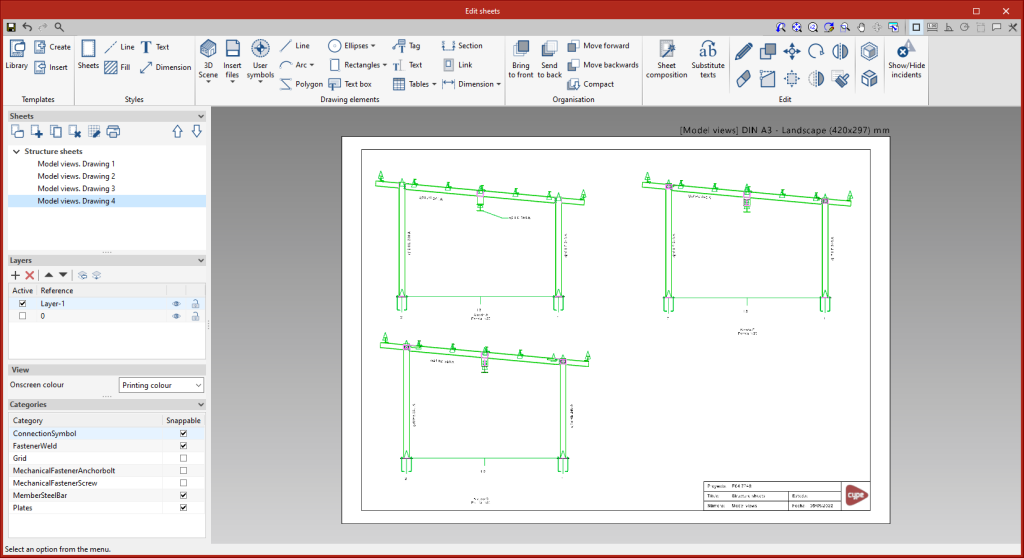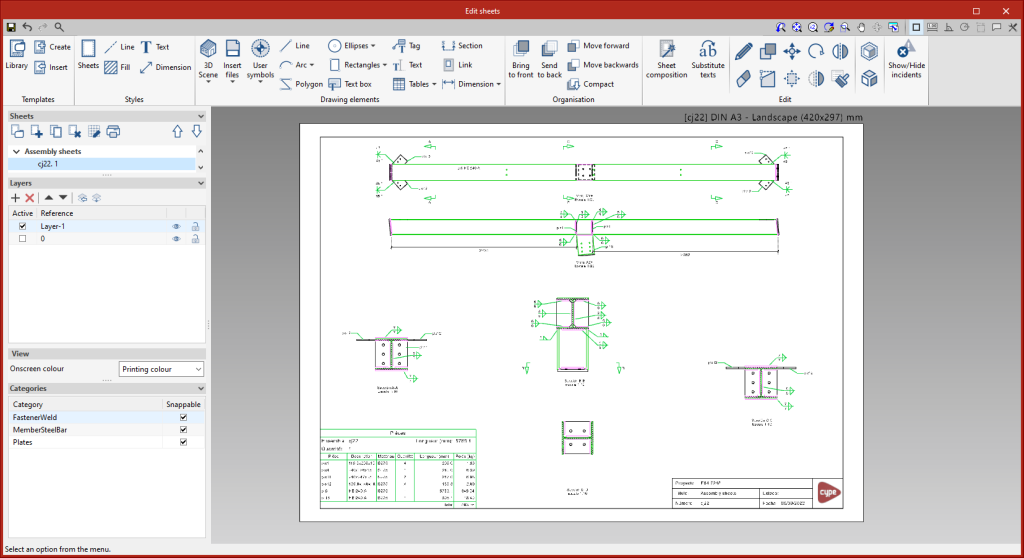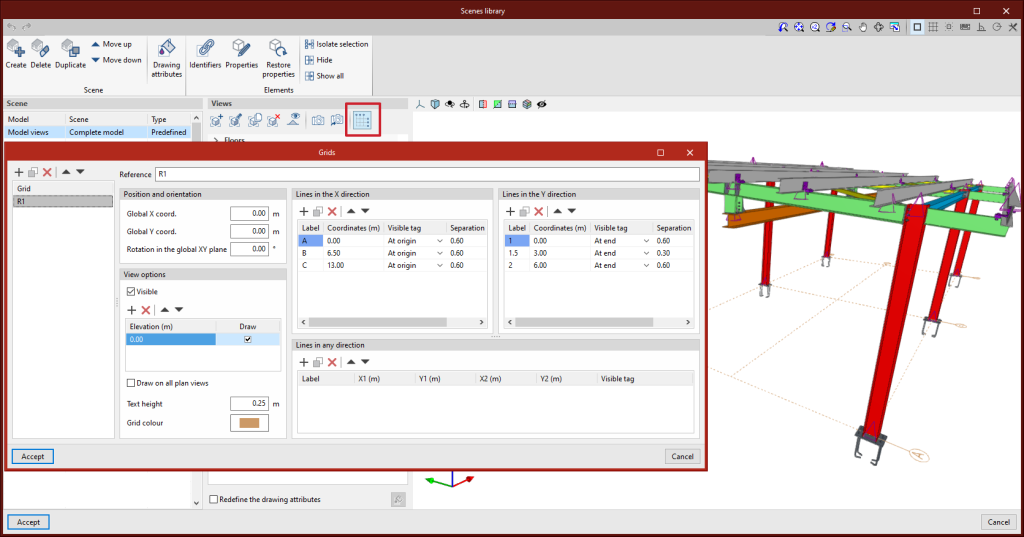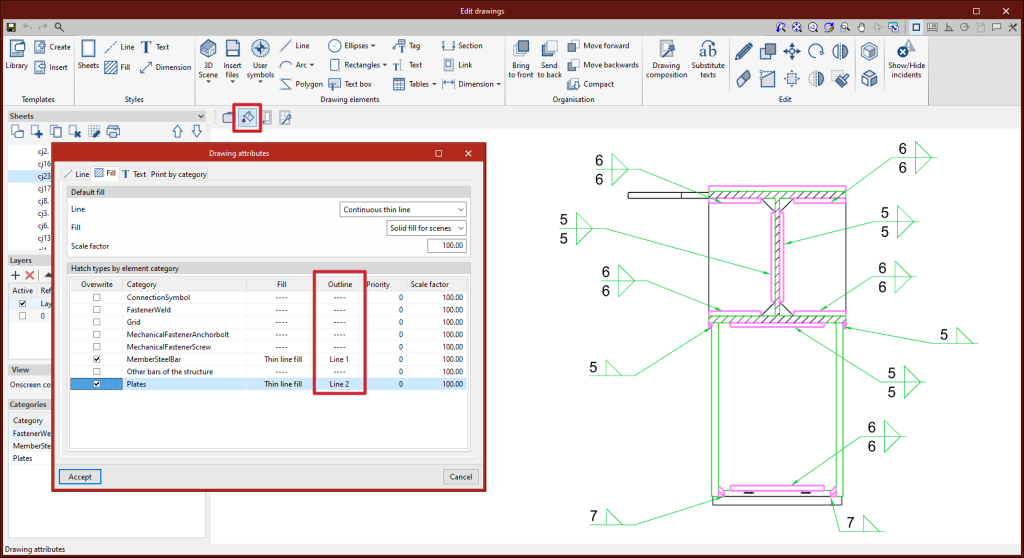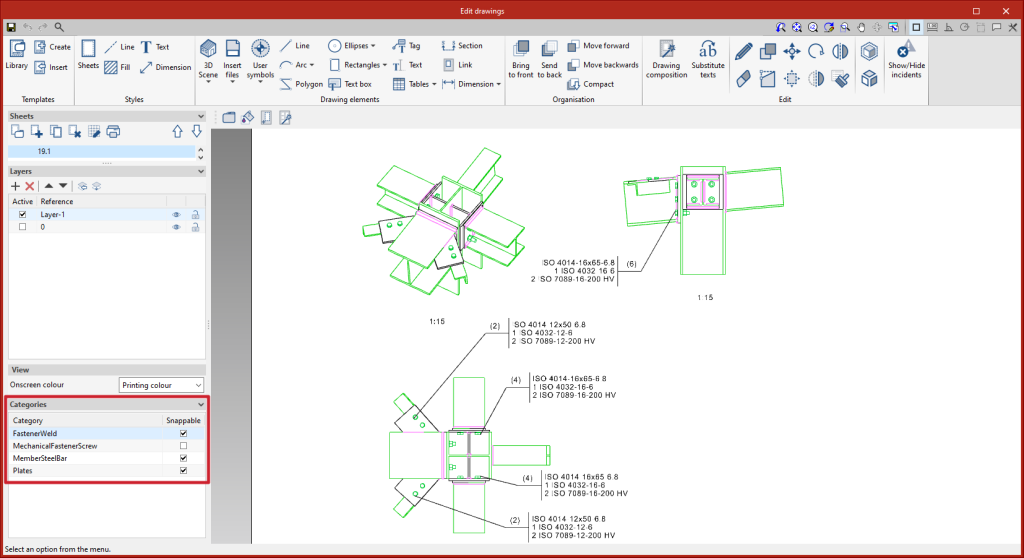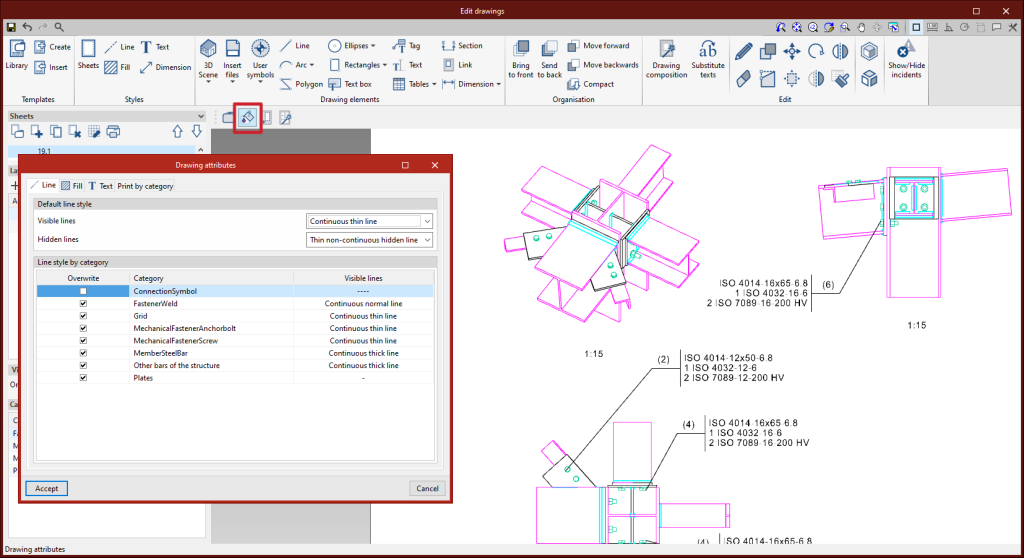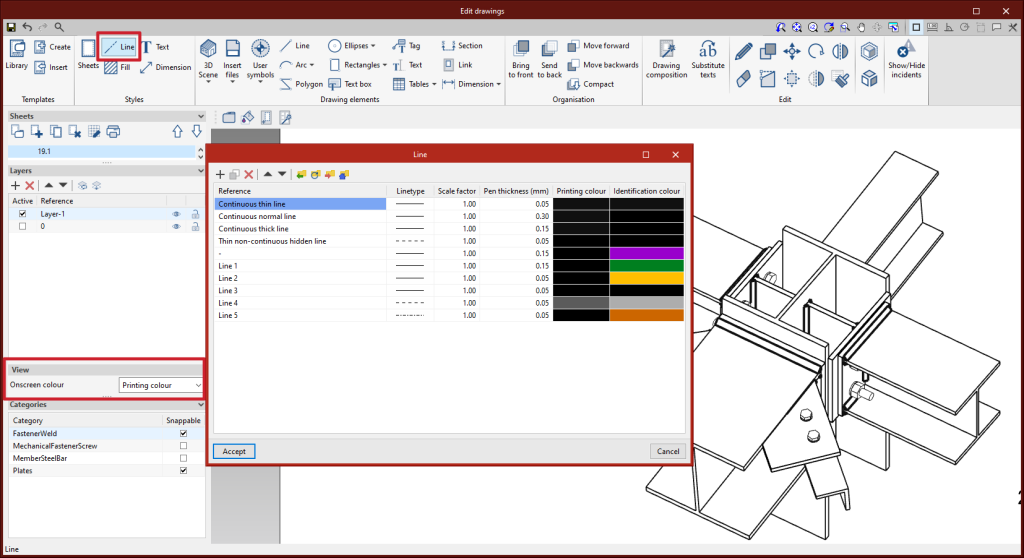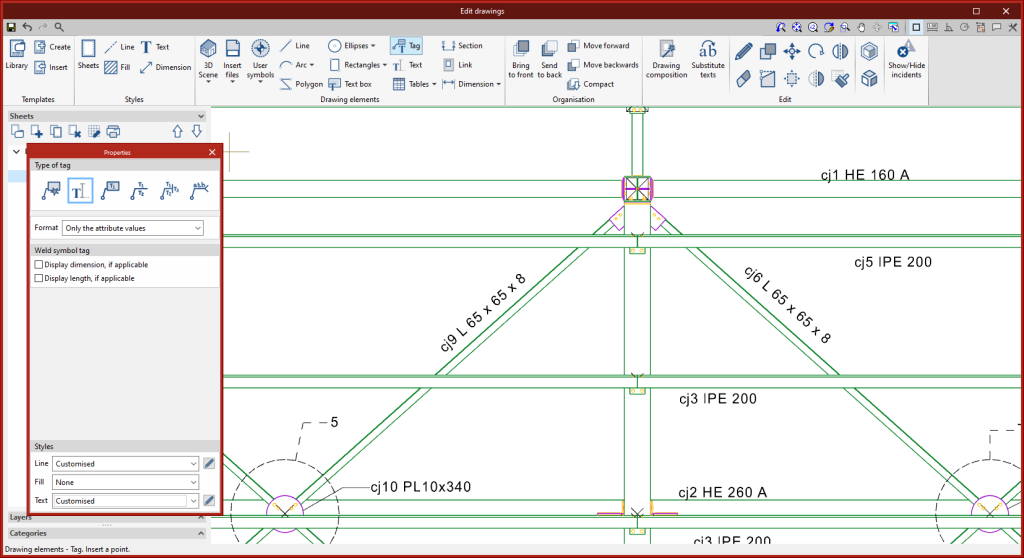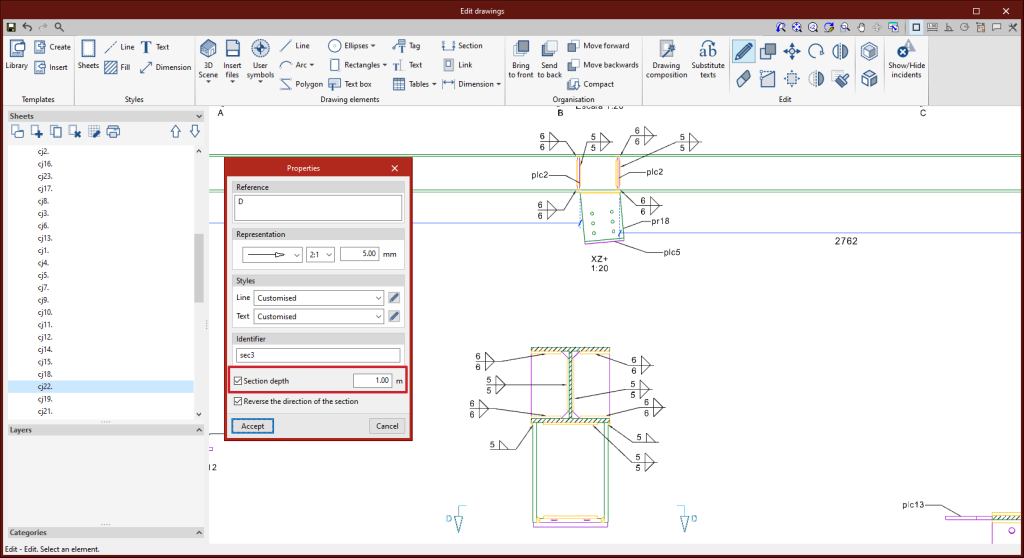In version 2023.d, StruBIM Steel includes the new "Structural steel detailing drawings" module. This module allows the program to generate graphical documents of the structure. Using these tools, users will be able to create sheets of the parts (sections and plates), assembly sheets, joint sheets and sheets with the general model views. The “Generation options”, “Parts”, “Assemblies”, “Joints”, “Model views”, “Composition” and “List” tools can be accessed from the “Sheets” menu.
In order to work with this module, the user's license must have the corresponding permission.
More information on the features of this StruBIM Steel module is available at Structural steel detailing drawings.



